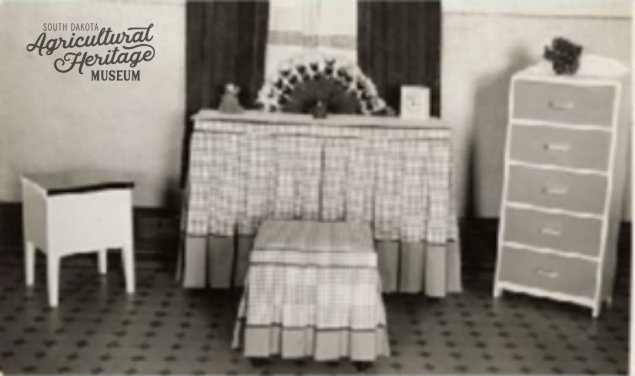
Due to the drop in value of commodities and wages during the Dust Bowl, farm families usually had food but often lacked the cash for fuel, repairs of machinery and household items. Using a horse and wagon for travel became popular again. Farm wives made do making simple meals with food they raised like vegetables, eggs, milk and meat; purchasing only the bare necessities like flour, sugar, oatmeal and coffee. They mended their clothes, used feed and flour sacks to make new ones, and altered second-hand clothes to fit.
The Pennington County Homemakers Club learned how to make furniture from barrels, crates and scrapped wood and used printed flour sacks or purchased fabric to upholster the furniture. It was an inexpensive way to decorate the home. This photograph, from a Pennington County Extension Homemakers scrapbook in the Museum’s collection, explains how to “make-do” by repurposing ordinary objects into furniture. According to the scrapbook: “The large easy chair is made of a candy barrel covered with cretonne, casters attached to bottom and back filled with excelsior and cotton batting, cost $2.25. Occasional chair is barrel with legs added and padded and covered with khaki twill; excelsior, cotton batting, burlap for underlining and twill cost $1.75. Foot stool made from prune box, covered with split spools, with padded velour removable cover, $0.36. Folding table of scrap lumber painted orange and black. Cost $0.85. Lace cover is made of bits of donated lace. Cover with 5 Doilies only $0.08.”
Explore more about the Dust Bowl by visit our exhibit Drowning in Dirt: Joseph Hutton and the Dust Bowl.

